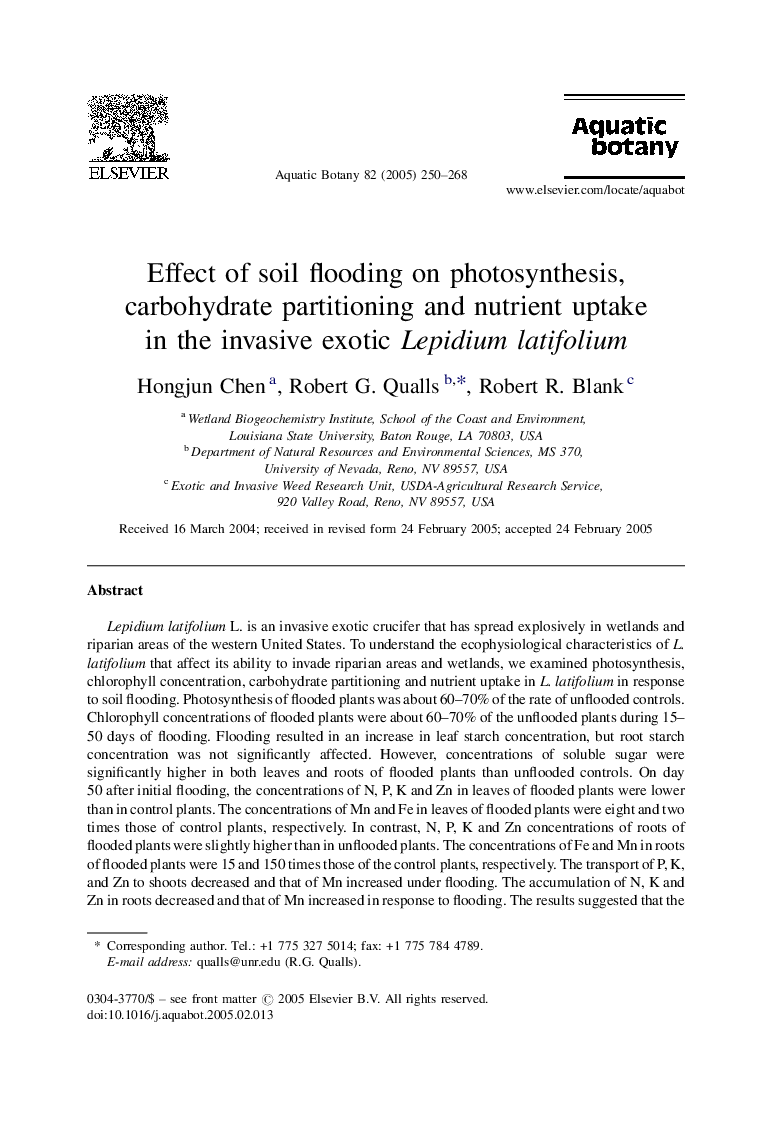| Article ID | Journal | Published Year | Pages | File Type |
|---|---|---|---|---|
| 9477585 | Aquatic Botany | 2005 | 19 Pages |
Abstract
Lepidium latifolium L. is an invasive exotic crucifer that has spread explosively in wetlands and riparian areas of the western United States. To understand the ecophysiological characteristics of L. latifolium that affect its ability to invade riparian areas and wetlands, we examined photosynthesis, chlorophyll concentration, carbohydrate partitioning and nutrient uptake in L. latifolium in response to soil flooding. Photosynthesis of flooded plants was about 60-70% of the rate of unflooded controls. Chlorophyll concentrations of flooded plants were about 60-70% of the unflooded plants during 15-50 days of flooding. Flooding resulted in an increase in leaf starch concentration, but root starch concentration was not significantly affected. However, concentrations of soluble sugar were significantly higher in both leaves and roots of flooded plants than unflooded controls. On day 50 after initial flooding, the concentrations of N, P, K and Zn in leaves of flooded plants were lower than in control plants. The concentrations of Mn and Fe in leaves of flooded plants were eight and two times those of control plants, respectively. In contrast, N, P, K and Zn concentrations of roots of flooded plants were slightly higher than in unflooded plants. The concentrations of Fe and Mn in roots of flooded plants were 15 and 150 times those of the control plants, respectively. The transport of P, K, and Zn to shoots decreased and that of Mn increased under flooding. The accumulation of N, K and Zn in roots decreased and that of Mn increased in response to flooding. The results suggested that the maintenance of relatively high photosynthesis and the accumulation of soluble sugar in roots of flooded plants are important adaptations for this species in flooded environments. Despite a reduction in photosynthesis and disruption in nutrient and photosynthate allocation in response to flooding, L. latifolium was able to survive 50 days of flooding stress. Overall, L. latifolium performed like a facultative hydrophyte species under flooding.
Keywords
Related Topics
Life Sciences
Agricultural and Biological Sciences
Aquatic Science
Authors
Hongjun Chen, Robert G. Qualls, Robert R. Blank,
